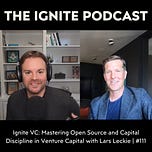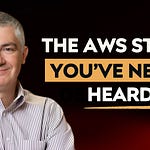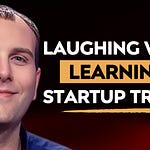In this episode of the Ignite podcast, host Brian Bell welcomes venture capitalist Lars Leckie from Aspenwood Ventures, a firm born from the legacy of Hummer Winblad Venture Partners, the first software-focused venture capital firm. Leckie dives into Aspenwood’s investment philosophy, which stays true to traditional venture capital by making focused bets on a handful of high-potential early-stage companies each year. Emphasizing long-term relationships with founders, Aspenwood remains committed to enterprise software, infrastructure, and B2B ventures rather than consumer software or marketplaces. This approach allows Aspenwood to align deeply with founders, contributing substantial resources and time to ensure shared success.
Leckie shares insights into Aspenwood’s lens on disruptive technology, focusing on early signals of transformation within enterprise software. He references their notable investments, including MuleSoft, which scaled from a startup to a multi-billion-dollar acquisition by Salesforce, and Sonatype, which safeguards open-source software for enterprise applications. Leckie also delves into capital efficiency, noting that Aspenwood prioritizes ventures that demonstrate high gross margins and can sustain operations with limited resources. This approach helps startups maintain flexibility and avoid premature scaling that could threaten their runway.
The conversation explores open-source software’s role in venture-backed businesses, where adoption metrics signal market demand. Leckie discusses the benefits and challenges of open-source models, such as high download rates that suggest product-market fit but may also limit revenue growth. Additionally, he shares Aspenwood’s investment in Defect Dojo, a security-focused open-source tool with substantial downloads, reflecting the market’s need for reliable and scalable security solutions.
Finally, Leckie discusses the Canadian startup ecosystem and his involvement with C100, a network supporting Canadian founders by connecting them with Silicon Valley mentors and investors. He highlights the remarkable growth in Canada’s tech sector, particularly the Toronto-Waterloo corridor, which now rivals Silicon Valley in developer talent.
Chapters:
Introduction to Lars Leckie & Aspenwood Ventures (00:01 – 00:18)
The Legacy of Hummer Winblad and Early Software VC (00:19 – 01:26)
Aspenwood Ventures’ Focus on Enterprise Software (01:27 – 03:30)
Early Days of Software Investing and Capital Challenges (03:31 – 05:09)
The Importance of Capital Efficiency in Venture (05:10 – 06:46)
Aspenwood’s Approach to Disruptive Technology (06:47 – 08:58)
Investing in Open Source with Sonatype and Defect Dojo (08:59 – 10:47)
Choosing Founders and the 10-Year Journey of Startups (10:48 – 12:54)
The Challenge of Timing in Technology Investing (12:55 – 14:48)
Capital Discipline and Making Smart Investments (14:49 – 17:02)
Marketplace Models and Why Aspenwood Avoids Them (17:03 – 18:15)
Leckie’s Angel Investments and the Story of Tonal (18:16 – 22:43)
Healthspan, Fitness, and Health Tracking Insights (22:44 – 24:57)
The Role of Open Source in Enterprise Software (24:58 – 27:02)
Finding Product-Market Fit with Open Source Downloads (27:03 – 30:08)
The C100 Network and Supporting Canadian Startups (30:09 – 35:00)
Cross-Border Investments and Canadian Tech Growth (35:01 – 38:11)
AI’s Impact on the Future of Software and Development (38:12 – 43:39)
AI’s Long-Term Disruption and Changing Developer Roles (43:40 – 47:00)
How Venture Capital is Adapting to New Market Dynamics (47:01 – 49:02)
Rapid-Fire: Productivity Hacks, Sailing, and Favorite Tools (49:03 – 53:21)
Final Thoughts on Venture Capital and Doubling Down on Strengths (53:22 – 57:18)











